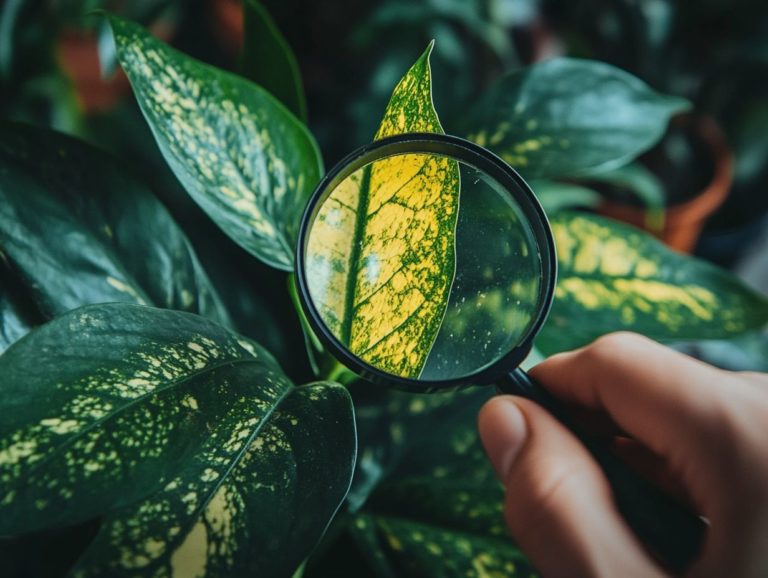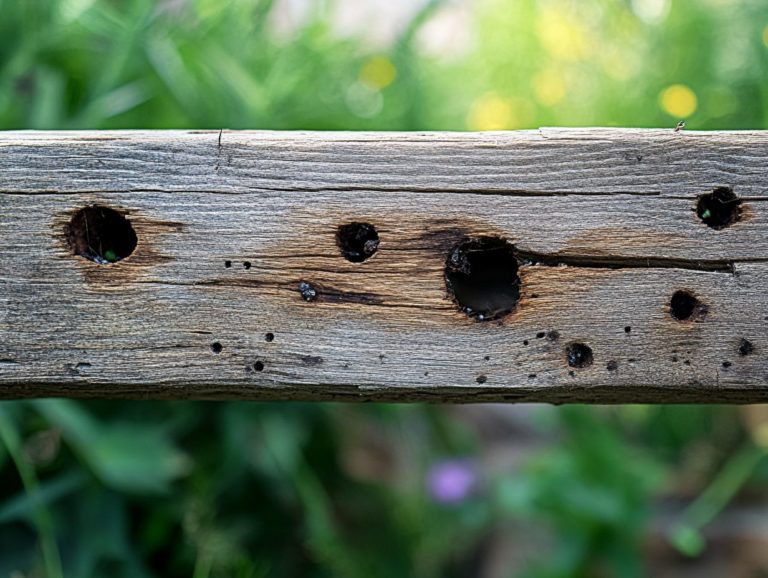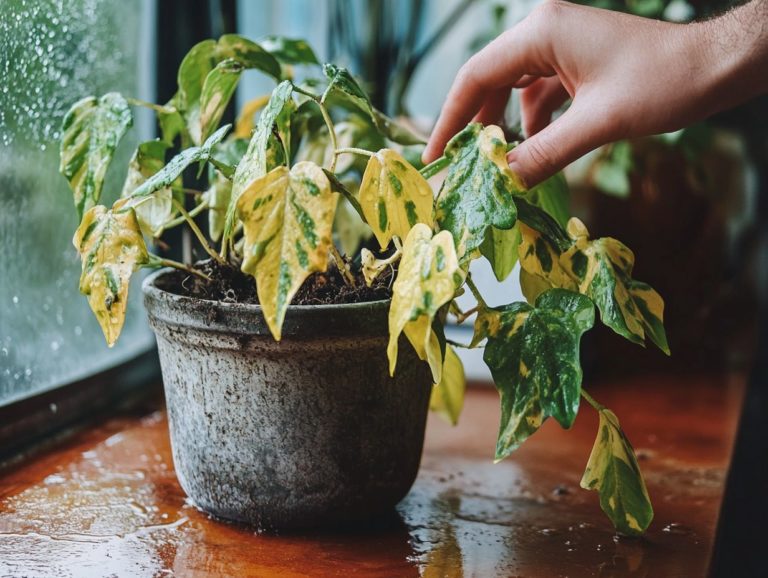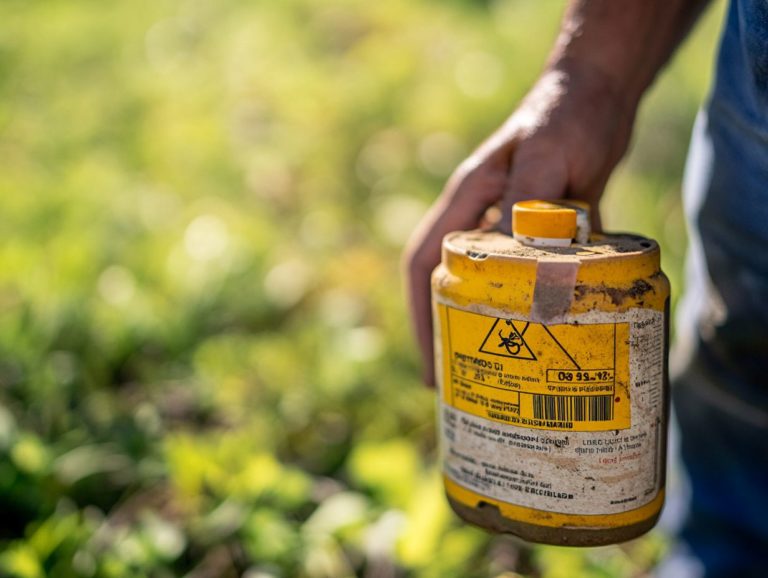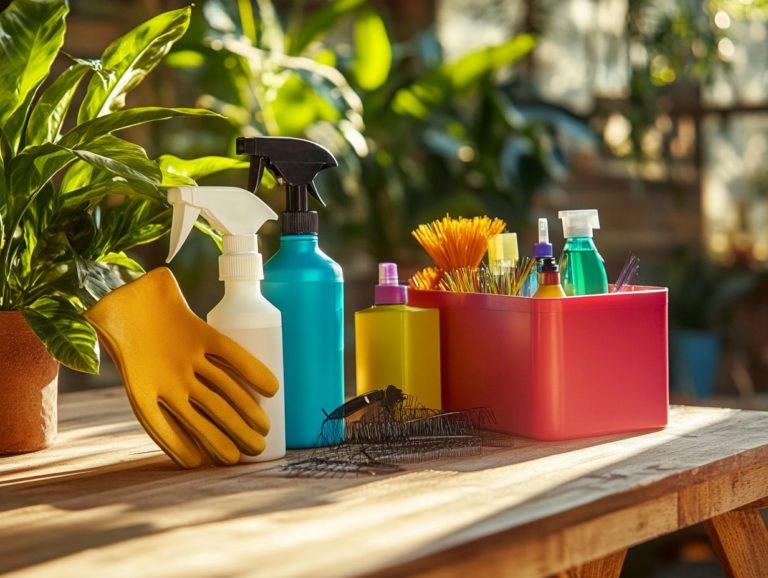Best Practices for Quarantining New Plants
When you introduce new plants into your garden, taking time to isolate them can significantly impact the health of your ecosystem.
Plant quarantine is crucial for safeguarding your existing greenery against pests and diseases that could cause considerable damage.
This guide will illuminate the benefits of quarantining, provide a detailed step-by-step method for executing it effectively, and share valuable tips for identifying potential issues.
Arm yourself with the knowledge needed to ensure your plants flourish while preserving the overall health of your garden.
Contents
- Preventing the Spread of Pests and Diseases
- How to Quarantine New Plants
- Duration of Quarantine
- Signs of Infestation or Disease
- Additional Tips for Successful Quarantine
- Frequently Asked Questions
- What are the best practices for quarantining new plants?
- Why should you bother quarantining your new plants?
- How long should I quarantine new plants?
- What should I look for when monitoring new plants during quarantine?
- Can I still water and care for the new plant during quarantine?
- What should I do if I notice any issues during the quarantine period?
Key Takeaways:
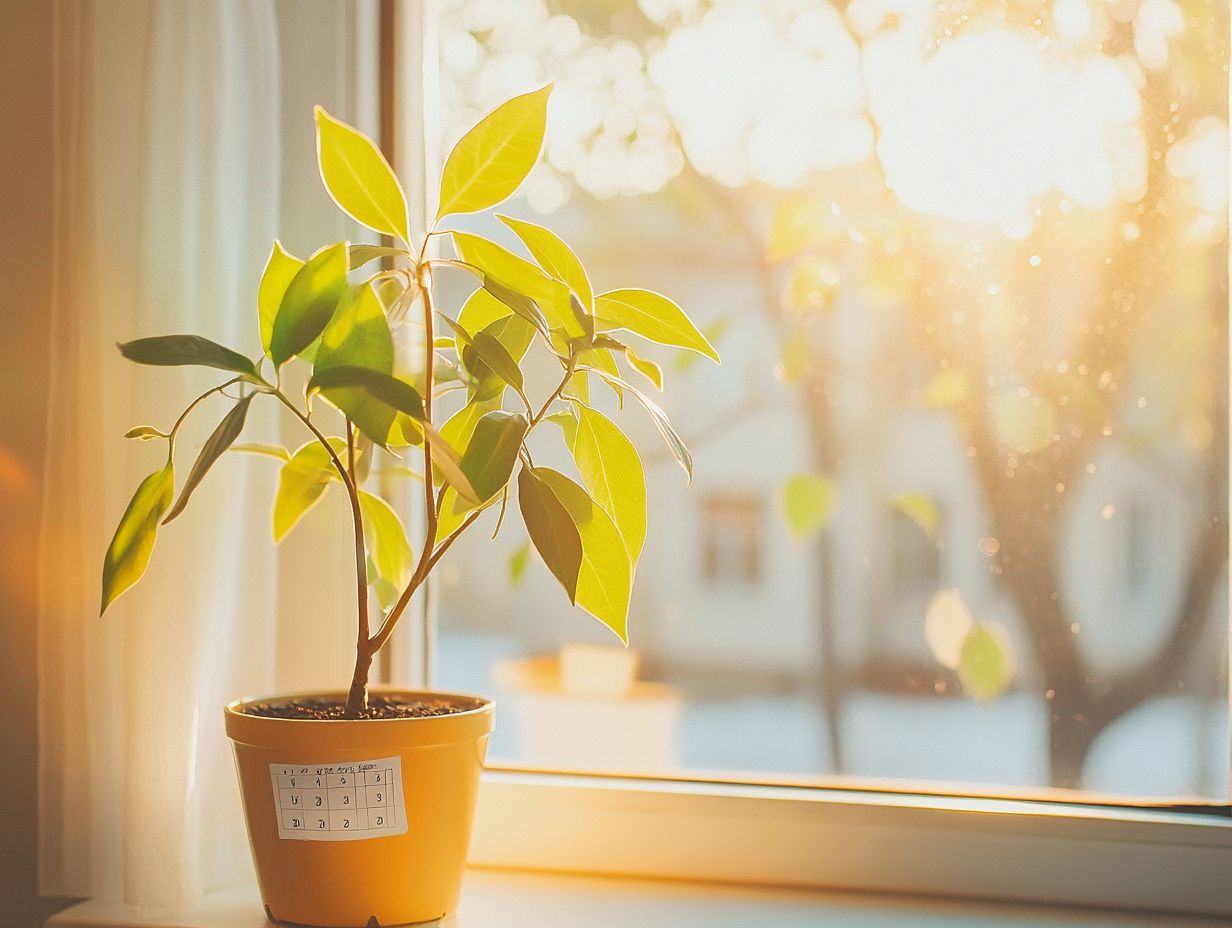
- Quarantining new plants is crucial to protect your existing plants and prevent the spread of pests and diseases, especially those that may come from a plant shop.
- A step-by-step guide and recommended timeframes can help ensure a successful quarantine process for various plant species.
- Mastering plant care boosts quarantine success! Proper maintenance, including watering and light exposure, is essential.
Understanding Quarantining for Plants
Quarantining your plants is a vital practice for discerning plant parents dedicated to preserving the health of their indoor environment and safeguarding existing houseplants from pests, including millipedes and fungus gnats, and diseases.
This process entails isolating new plants for a designated period, allowing you to confirm they are free from pests and harmful insects that could jeopardize the well-being of your green sanctuary.
Recognizing the significance of this procedure is essential for anyone involved in indoor gardening. It fosters sustainable plant care and encourages robust growth across diverse species, whether they’re tropical plants or garden favorites like Begonia.
What is Plant Quarantine?
Plant quarantine involves isolating new plants to inspect for pests and diseases before welcoming them into your home. This practice serves as a protective barrier for your existing plants.
By keeping your newly acquired greenery separate for about two to four weeks, you can closely observe any signs of common pests, such as aphids, spider mites, or mealybugs, while also inspecting the leaves and soil for unusual signs.
This period allows for the detection of diseases that might not be immediately visible. Regular checks during this time are crucial; they help mitigate risks and ensure that your plant care routine remains effective.
This practice nurtures a healthier indoor ecosystem and enhances the overall vitality and longevity of your cherished plant collection, giving you the love and experience needed for successful plant parenting.
Benefits of Quarantining New Plants
Quarantining new plants comes with a wealth of advantages, especially for those who are passionate about maintaining the health and vitality of their indoor gardens while keeping infestations and diseases at bay.
By isolating new arrivals, you can meticulously inspect them for any bugs or pests, ensuring they are completely free from harmful critters before welcoming them into your plant family.
This thoughtful practice not only safeguards your existing plants but also fosters a healthier environment for all your green companions, promoting optimal growth and flourishing spaces.
Protecting Your Existing Plants
Protecting your existing plants is absolutely essential. Quarantining new arrivals from places like Home Depot is vital for their long-term health and vitality.
By isolating your new additions, you can effectively monitor them for any signs of pests or diseases before introducing them to your wider collection.
This process involves regular inspections, where you should closely examine the leaves for unusual spots, webbing, or signs of discoloration that may indicate infestations.
Keeping a vigilant eye during the quarantine period allows for timely interventions, such as applying insecticidal soap or neem oil if any issues arise, particularly regarding pests like millipedes.
Maintaining optimal conditions like humidity and light will not only strengthen the new plants’ health but also make them less susceptible to any pathogens they might carry.
Preventing the Spread of Pests and Diseases
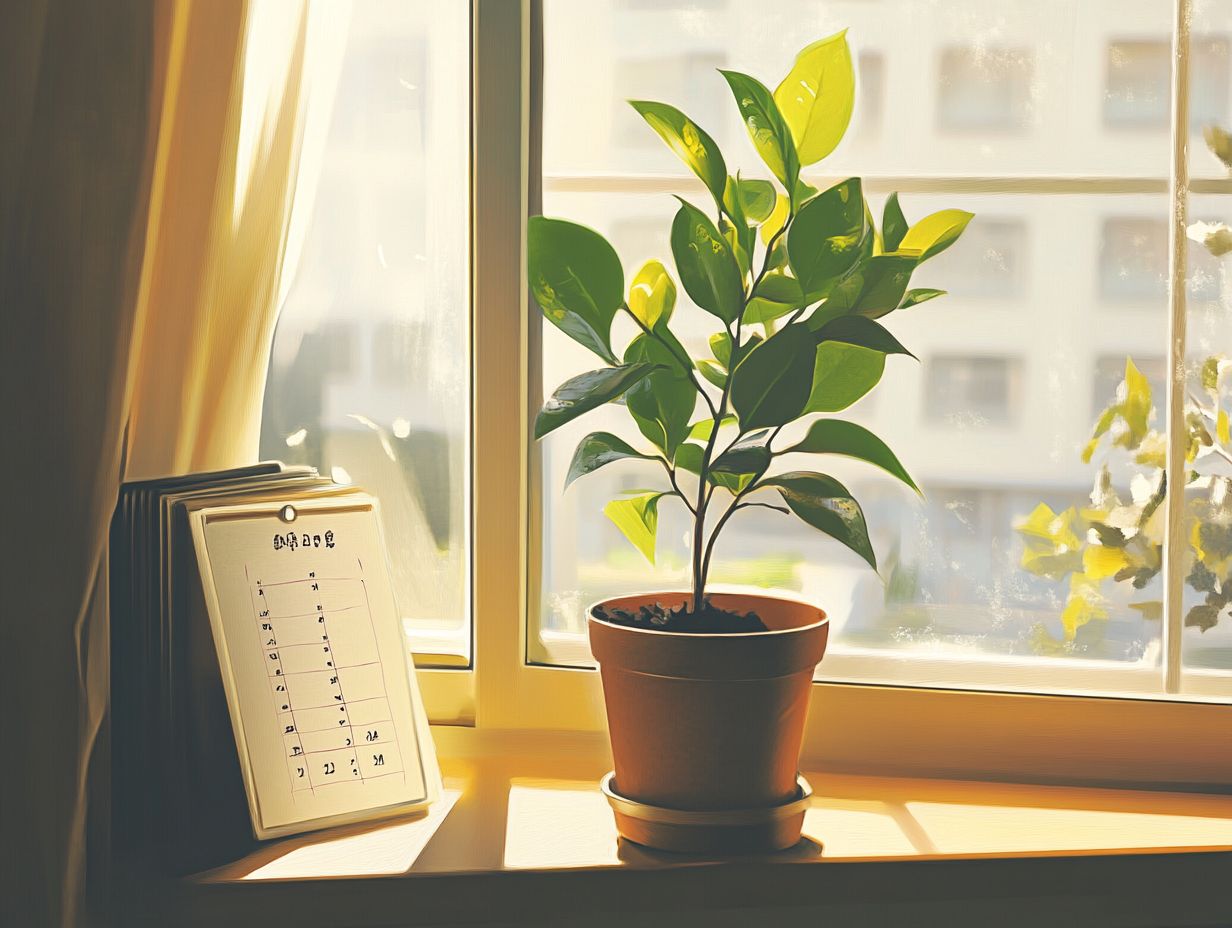
Preventing the spread of pests and diseases is essential in your houseplant care routine. Establishing a quarantine protocol for new plants especially after shopping at a plant shop can minimize the risk of infestation.
By isolating new arrivals for at least two weeks, you can closely monitor signs of common pests like spider mites, aphids, or mealybugs and diseases like powdery mildew or root rot. Early detection is crucial; watch for visual cues such as discolored leaves, webbing, or stunted growth. Additionally, learning how to safely introduce new plants can enhance your plant care routine.
Addressing these issues promptly is vital. Your treatment options range from natural insecticidal soaps like Castile Peppermint to fungicides that work from within the plant, depending on the severity.
Quarantine is your secret weapon to keep your plants safe and healthy! It enables you to observe and manage incoming plants carefully, ensuring they are pest-free before mingling with your cherished collection.
How to Quarantine New Plants
Quarantining new plants is a careful process that greatly boosts the health of your green space. By ensuring every new arrival is inspected and treated for pests or diseases, you set the stage for a seamless integration into your home environment.
Step-by-Step Guide
A step-by-step guide for quarantining new plants enhances your process. Each phase plays a vital role in the long-term health of your greenery and its soil.
Your journey begins with a thorough initial inspection to spot visible pests or disease signs, including checking the soil for bugs. Then, isolate your new arrivals from existing plants to prevent any spread.
In the quarantine space, monitor for changes daily. Keep an eye out for leaf discoloration or unusual growth patterns.
If you detect pests, such as bugs in the soil, turn to treatment options like insecticidal soaps or neem oil.
Maintain optimal humidity and light conditions during this phase. This fosters a robust, pest-free environment as your plants acclimate to their new home.
Duration of Quarantine
The duration of quarantine is crucial for maintaining your new plants’ health and protecting your home garden from unwanted pests. Timeframes can vary significantly, depending on the specific species and risk factors.
Recommended Timeframes
Recommended timeframes for quarantining new plants typically span from two weeks to a month. This depends on the species, such as tropical plants, and their health conditions.
During this essential period, examine your plants closely for signs of pests or diseases that could threaten your collection. Some tropical species may require a longer monitoring phase due to their sensitivity to environmental shifts, while succulents, known for their resilience, may breeze through quarantine.
Grasping these subtleties enhances your plants’ health and keeps unwanted pests at bay. This proactive approach, including how to handle new plants without spreading pests, reduces infestation risks when new specimens enter your home.
Signs of Infestation or Disease
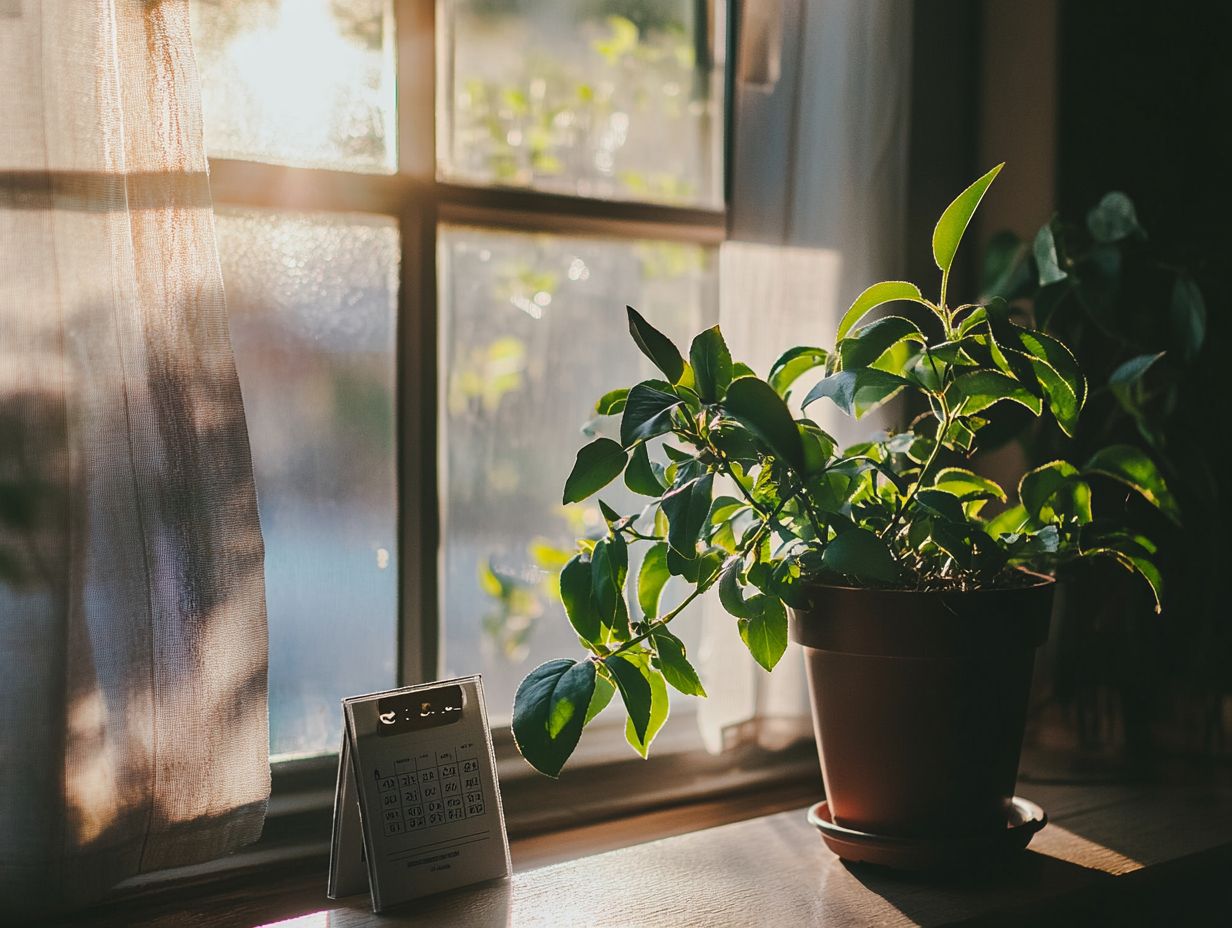
Recognizing infestation or disease signs in new plants is essential for effective quarantine and treatment. This awareness enables you to take timely action, preserving your entire collection’s health and ensuring your green sanctuary thrives.
Don t wait! Check your plants immediately for any signs of pests. Start quarantining your plants today!
Identifying and Addressing Issues
Identifying and addressing issues early on is essential for maintaining the health of your plants. This proactive approach allows for prompt treatment of any pests or diseases that may arise.
By routinely inspecting the foliage, stems, and soil, you can catch potential problems before they escalate into more significant threats. Keep an eye out for signs like discoloration, wilting, or unusual growth patterns, as these can signal underlying issues.
Utilizing various methods, including visual checks, soil analysis, and even magnifying tools, can enhance the accuracy of your diagnosis. When you detect pests, consider treatment options such as organic solutions like neem oil or insecticidal soaps.
These can effectively manage infestations without harming beneficial insects. For diseases, identifying the specific type whether fungal or bacterial can guide your approach. Fungus treatments may be suitable in some cases, while others might benefit from simple methods, like improving air circulation.
Regular monitoring is crucial. Keep a close watch on your plants and ensure they have the best light and humidity! This will help them thrive and prevent further complications.
Additional Tips for Successful Quarantine
By incorporating some additional tips for a successful quarantine, you can elevate the care and maintenance of your new plants. This proactive approach ensures they remain healthy and free of pests before being introduced to your collection.
Proper Plant Care and Maintenance
Proper plant care and maintenance during the quarantine process are essential for promoting health. This ensures that new arrivals acclimate well to their surroundings, creating a positive environment for growth.
By establishing a consistent watering schedule, you can avoid the pitfalls of overwatering or underwatering both of which can stress your plants and hinder their adaptation.
Understanding the specific light requirements of each species allows you to provide adequate sunlight without risking damage from direct rays. Routine health checks are another crucial component of this process.
By regularly inspecting leaves for signs of pests or disease, you can swiftly address any issues that may arise. Your dedication to these essential care practices nurtures your plants and fosters a thriving indoor ecosystem.
Frequently Asked Questions
What are the best practices for quarantining new plants?
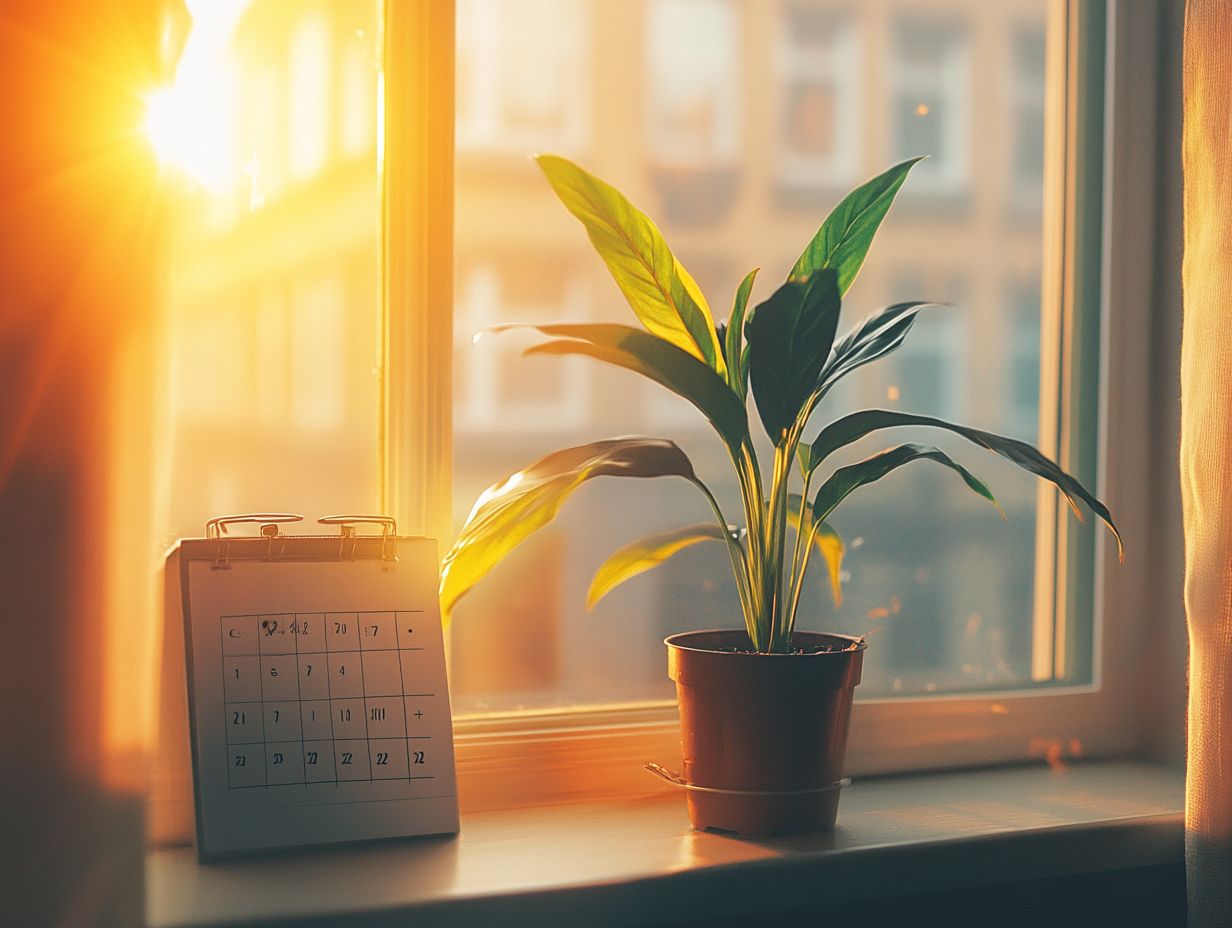
The best practices for quarantining new plants include isolating them from other plants for a period of 2-3 weeks. Monitor for any signs of pests or diseases, and avoid contact with other plants or gardening tools.
Why should you bother quarantining your new plants?
Quarantining new plants is important to prevent the spread of pests and diseases to other plants in your garden. It also allows you to closely monitor the health of the new plant before introducing it to your existing plants.
How long should I quarantine new plants?
It is recommended to quarantine new plants for a period of 2-3 weeks. This allows enough time for any potential pests or diseases to manifest and be identified before the plant is introduced to your garden.
What should I look for when monitoring new plants during quarantine?
You should look for any signs of pests or diseases, such as wilting leaves, discoloration, or unusual growth patterns. It is also important to check for any physical damage or signs of stress on the plant.
Can I still water and care for the new plant during quarantine?
Yes, you should still water and care for the new plant during quarantine. However, it is important to avoid using the same gardening tools or watering tools on other plants to prevent the spread of any potential pests or diseases.
Consider using separate tools for your quarantine space.
What should I do if I notice any issues during the quarantine period?
If you notice any signs of pests or diseases during the quarantine period, it is best to consult a gardening expert or your local extension office for advice on how to properly treat the plant.
If the issue cannot be resolved, it may be best to dispose of the plant to prevent the spread to other plants in your garden. This care is crucial for maintaining a healthy home environment.
Start your plant care journey today and share your experiences with fellow gardening enthusiasts!

